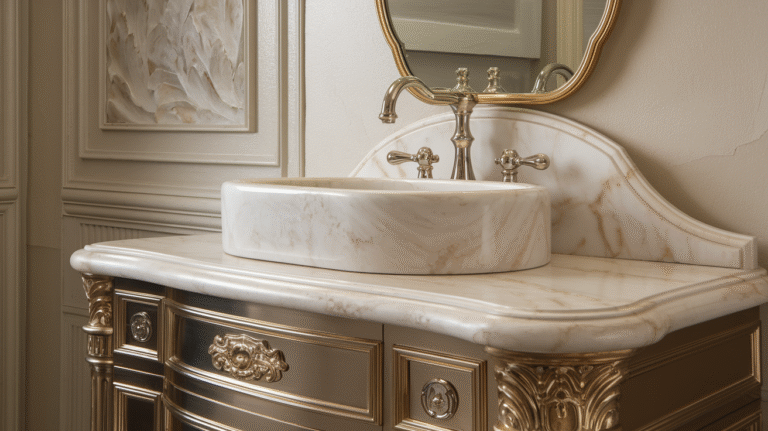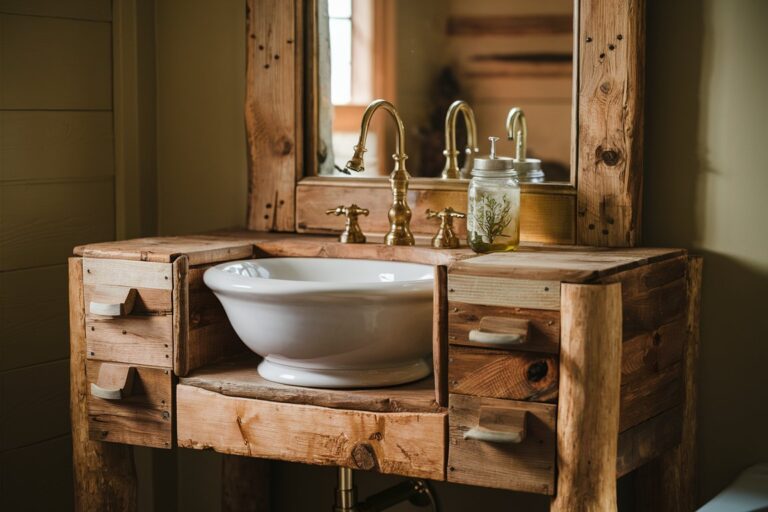Wabi-Sabi Bathroom: 27 Ideas to Embrace Imperfection
This site contains affiliate links. I may earn a small commission, at no extra cost to you.
Hey, you! Tired of those glossy, perfect bathrooms that look like they belong in a spaceship? Let’s chat about something way cooler: the wabi-sabi bathroom. I’ve been obsessed with this Japanese vibe lately—think rustic, raw, and beautifully flawed.
It’s all about embracing the imperfections we usually try to hide, and honestly, it’s a game-changer for anyone who’s over the sterile, cookie-cutter aesthetic.
Ready to transform your bathroom into a cozy, soulful retreat? Here are 27 ideas to get you started—straight from one enthusiast to another.
Why Wabi-Sabi Works in Bathrooms
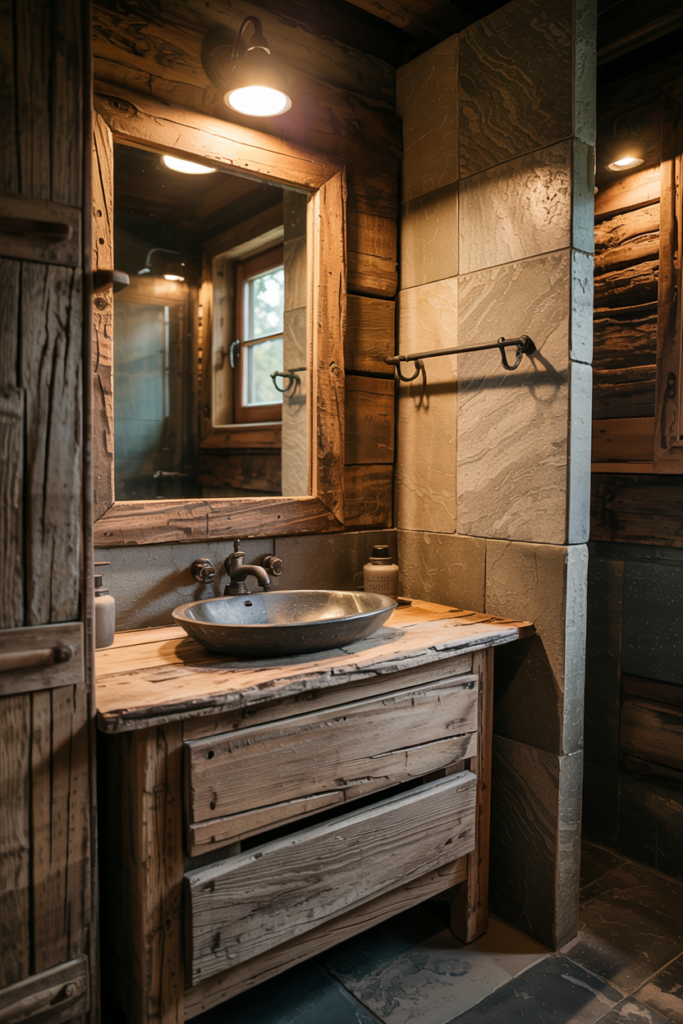
Okay, first off, why does wabi-sabi even fit a bathroom? It’s simple: This space is where we’re real. We’re not posing for Instagram here—we’re brushing our teeth, splashing water everywhere, living life.
Wabi-sabi celebrates that messiness. It’s about natural textures, muted colors, and stuff that looks like it’s got a story. I once stayed in a cabin with a cracked wooden sink frame, and instead of thinking “ugh, busted,” I was like, “Wow, this has character.” That’s the vibe we’re chasing.
The Core of Wabi-Sabi
So, what’s the deal with wabi-sabi? At its heart, it’s all about celebrating the beauty of things as they are. Here’s what that means in practice:
- Natural materials: Wood, stone, clay—anything that feels grounded and has that lovely, organic imperfection. Personally, I’m a sucker for rough stone soap dishes or clay vases with little ridges from the potter’s hand. They instantly add soul.
- Imperfection: Cracks, dents, asymmetry? Yes, please. I’d even recommend browsing flea markets or antique shops for those one-of-a-kind finds that aren’t flawless. They’ll bring in way more charm than something factory-perfect.
- Simplicity: Less clutter, more calm. In my opinion, clearing out the “extras” and only keeping what you actually use makes the space feel instantly more relaxing. Plus, it makes cleaning way easier (and I’m always here for less scrubbing).
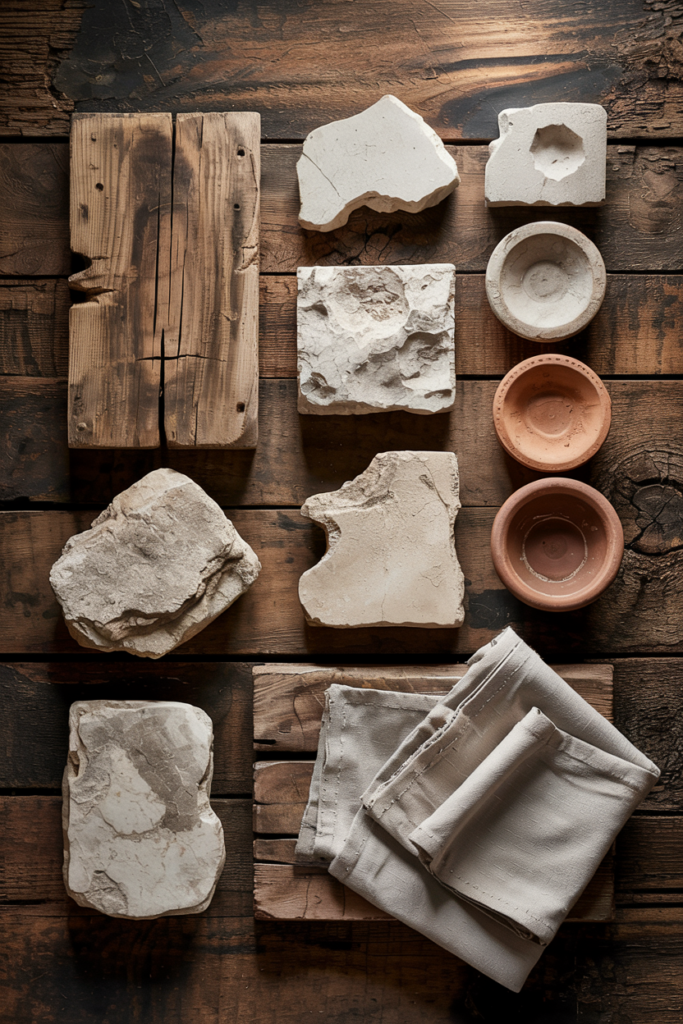
Let’s break this down with some ideas you can actually use.
Rustic Wabi-Sabi Bathroom Ideas
Exposed Wooden Beams
Rough-hewn wooden beams above your tub? Total game-changer. Don’t sand them smooth—let the knots, cracks, and splinters show. That raw texture is what makes the space feel alive. I once saw this in a friend’s bathroom, and honestly, it felt like the forest had moved right indoors.
You can pair the wood with soft, warm lighting—maybe a paper lantern or a dim sconce—and you’ve got instant Zen. Personally, I love reclaimed beams over fresh-cut ones. They carry a history, a kind of quiet presence, and they make the whole room feel more grounded.

Weathered Wood Vanity
Forget the glossy, store-bought vanity. Too perfect, too predictable. Instead, grab an old wooden table from a flea market or thrift shop, drop a sink on top, and you’ve got yourself a one-of-a-kind piece. In my opinion, the more scratches, dents, and uneven edges, the better. It’s like the wood is telling you its life story every time you wash your hands.
Personally, I love this because it feels real. You’re not hiding age, you’re celebrating it. Pair it with a simple ceramic or stone basin, and suddenly you’ve got a vanity that looks custom but without the custom price tag. Trust me, it beats the flat-packed stuff any day.
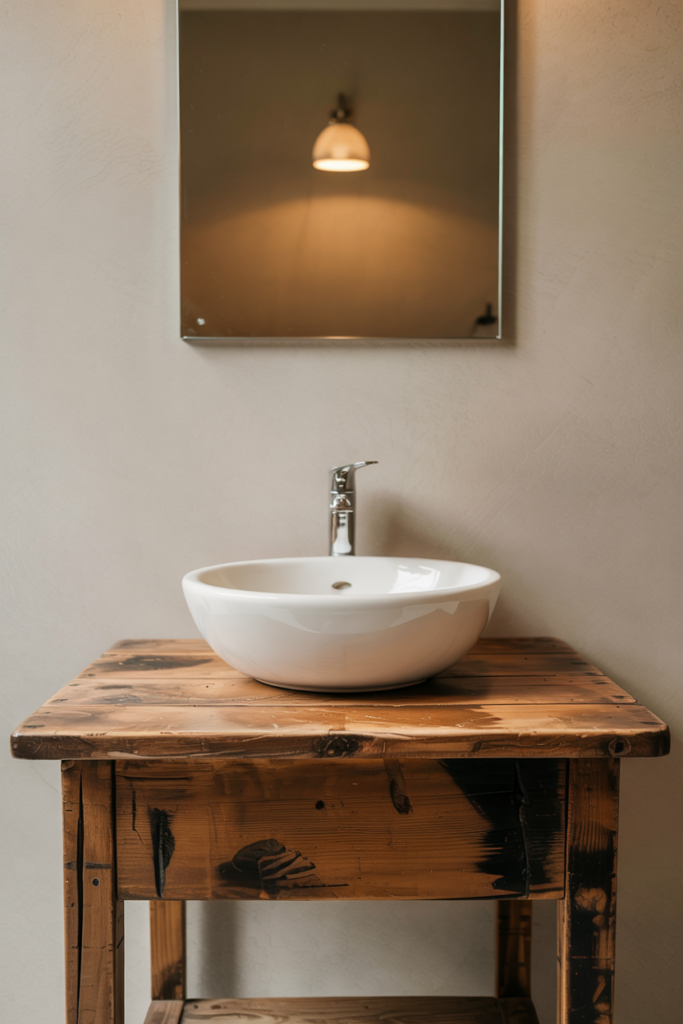
Bamboo Shelving
Bamboo is lightweight, natural, and it just screams wabi-sabi. Swap out heavy cabinets for a few simple bamboo shelves to hold towels, candles, or even a plant or two. In my opinion, it works best when the shelves aren’t perfectly even. Let them tilt a little, leave the edges raw, and you’ll get that relaxed, organic feel that makes the space come alive.
Personally, I prefer bamboo because it brings a touch of warmth without overwhelming the room. It’s sturdy enough to be useful, but soft enough to keep the bathroom feeling calm and spa-like. Plus, it’s usually budget-friendly, which is always a win.
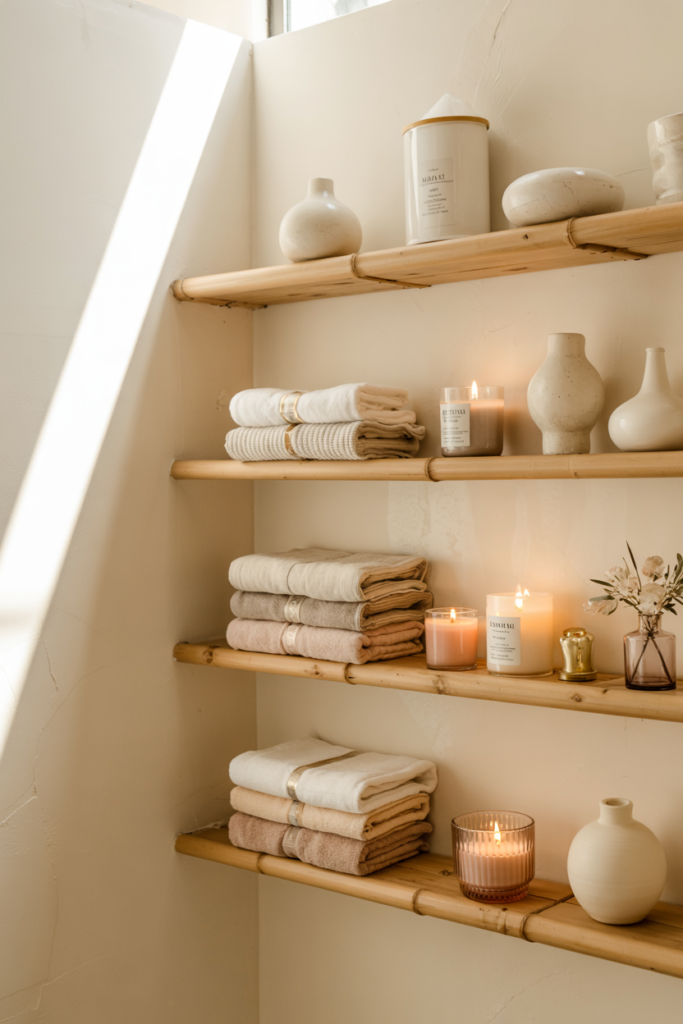
Pebble Floor Tiles
Ever stepped barefoot on a pebbled beach? That’s exactly the vibe you can bring into your bathroom. Pebble floor tiles feel amazing underfoot, like a little foot massage every time you step out of the shower. And because no two stones are ever the same, you get that perfect wabi-sabi irregularity built right in.
In my opinion, it’s one of the easiest ways to add natural texture without trying too hard. I prefer mixing soft gray and sandy tones so the floor feels calming and earthy. Pair it with a simple wooden bath mat or a linen rug, and suddenly the whole room feels like a spa retreat.
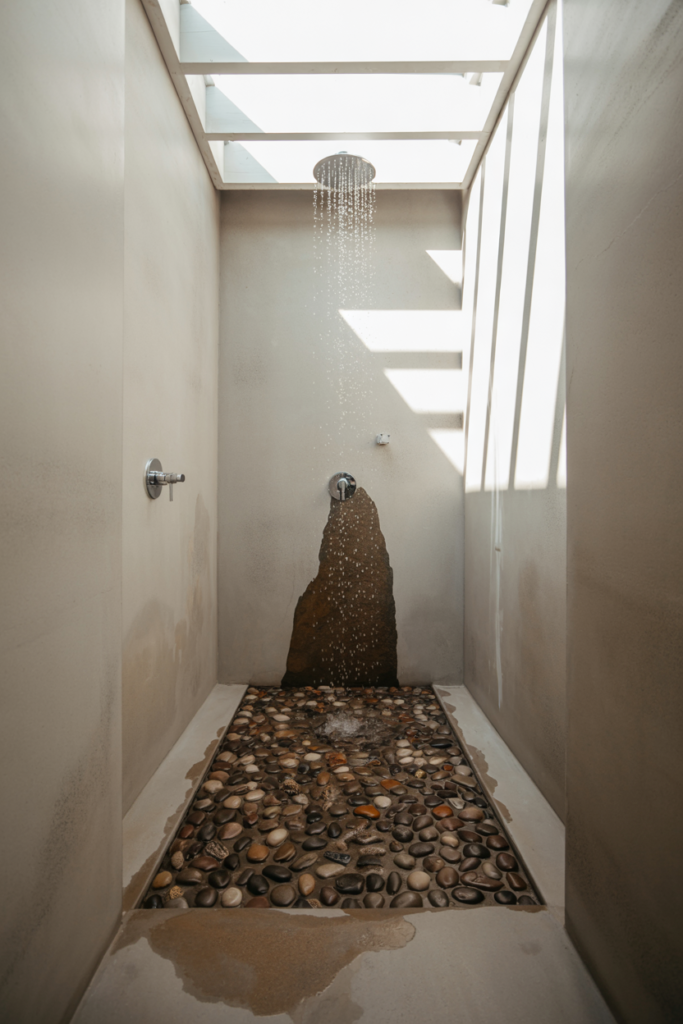
Earthy Color Palette Ideas
Muted Greens
Paint your walls a soft, mossy green and watch how instantly calming the space feels. It’s natural, earthy, and brings that outdoorsy vibe right into your bathroom. Plus, it’s practical—muted greens do a surprisingly good job of hiding water spots and little splashes. Because let’s be real, who’s wiping down their bathroom walls every single day? Not me.
Personally, I love how this color shifts with the light. In the morning, it feels fresh and energizing. At night, it turns cozy and grounding, almost like a forest after rain. I’d recommend pairing it with neutral tones—think stone gray or warm beige—so the green really has space to shine.
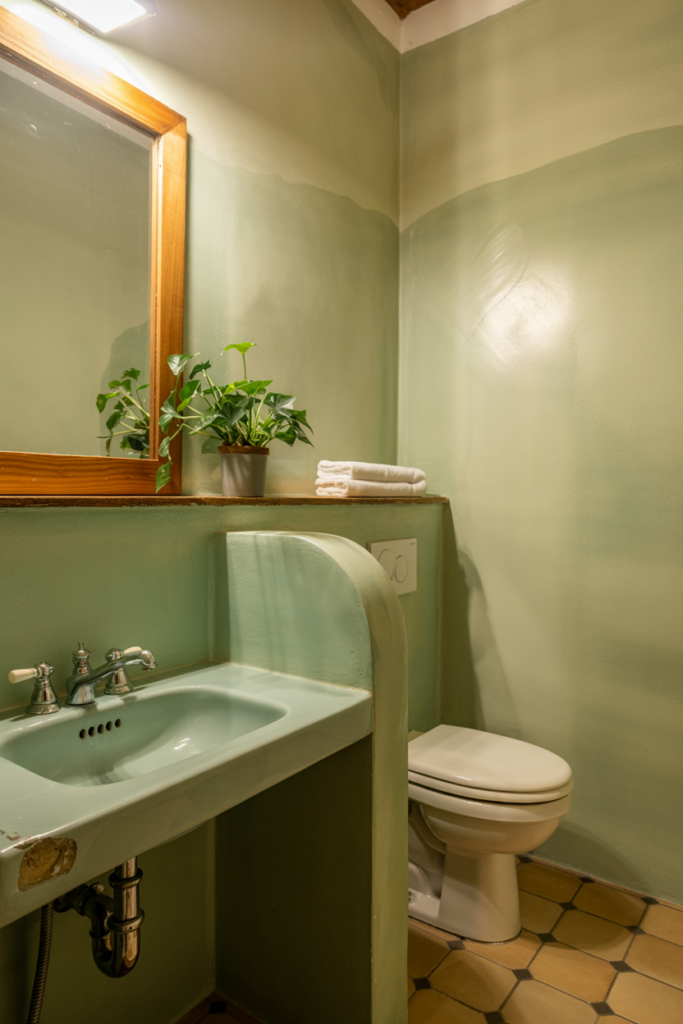
Warm Browns
Think earthy browns for your towels, rugs, or even small accessories. Warm tones instantly ground the space and make it feel more inviting. I’ve got a brown bath mat in my own bathroom that looks like it’s been there forever—in the best possible way. Instead of feeling old, it feels comforting, like it just belongs there.
In my opinion, browns work beautifully with muted greens, stone grays, and natural wood. They add warmth without being flashy. Personally, I’d recommend mixing different shades—maybe a deep chocolate towel with a lighter sandy rug—so the space feels layered and relaxed.
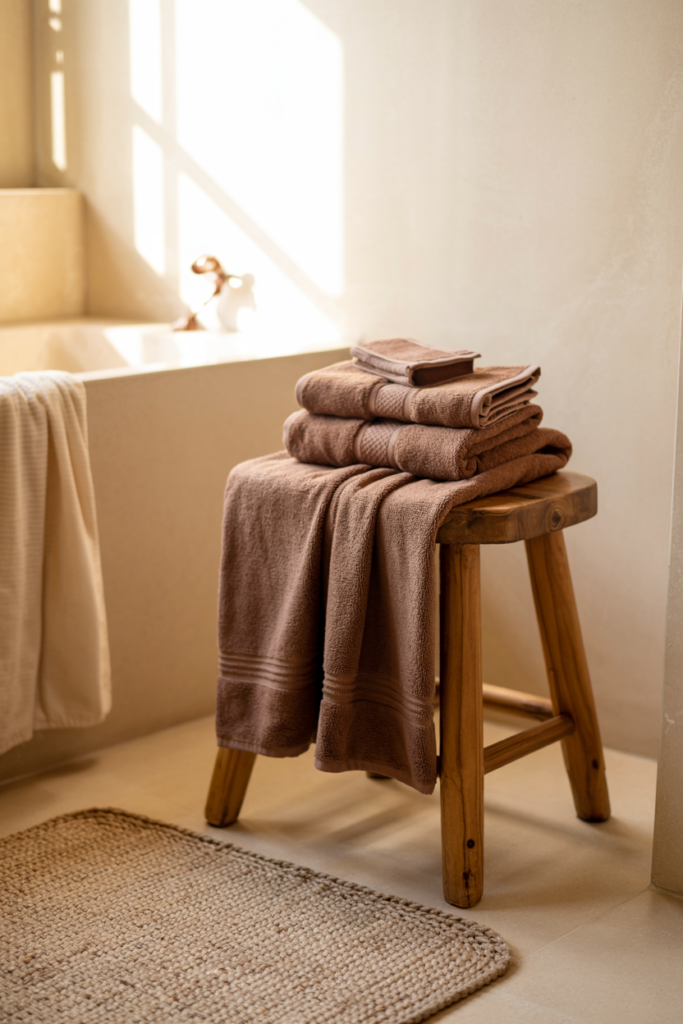
Faded Grays
Swap out the mass-produced soap dispensers and toothbrush holders for handmade ceramics. The little imperfections—slight curves, uneven glaze, tiny bubbles—are what make them special. In my opinion, they bring a kind of quiet charm that polished accessories just can’t.
I’ve got a hand-thrown ceramic cup on my bathroom shelf, and honestly, it makes brushing my teeth feel a little less routine. Personally, I’d recommend earthy tones like clay, stone gray, or muted blue. They blend beautifully with wood and natural textures, and each piece feels like it has a story.
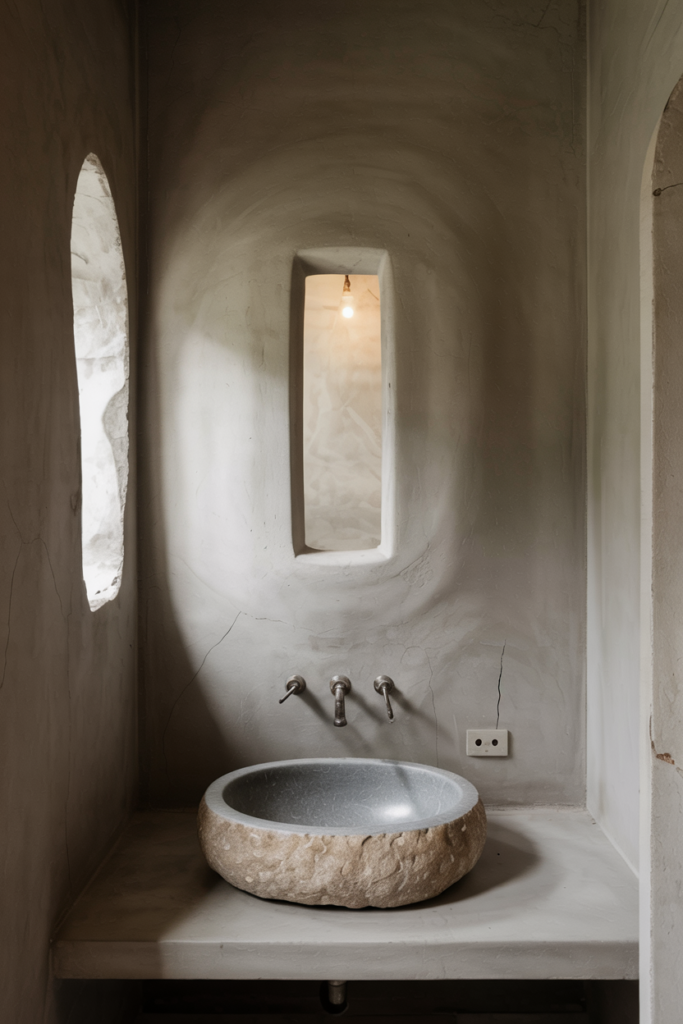
Textured Wabi-Sabi Bathroom Touches
Rough Stone Sink
A hand-carved stone sink is pure wabi-sabi magic. The rough edges and uneven surface make it feel ancient, like it’s been there for centuries instead of freshly installed. It instantly adds weight and presence to the room, almost like a little sculpture you get to use every day.
Personally, I love how each stone sink is completely unique. No two pieces look the same, which makes it a true statement item. And trust me, it’s a great conversation starter when guests pop in—people notice. Pair it with a simple wooden vanity or muted walls, and you’ve got a bathroom centerpiece that feels both raw and refined.
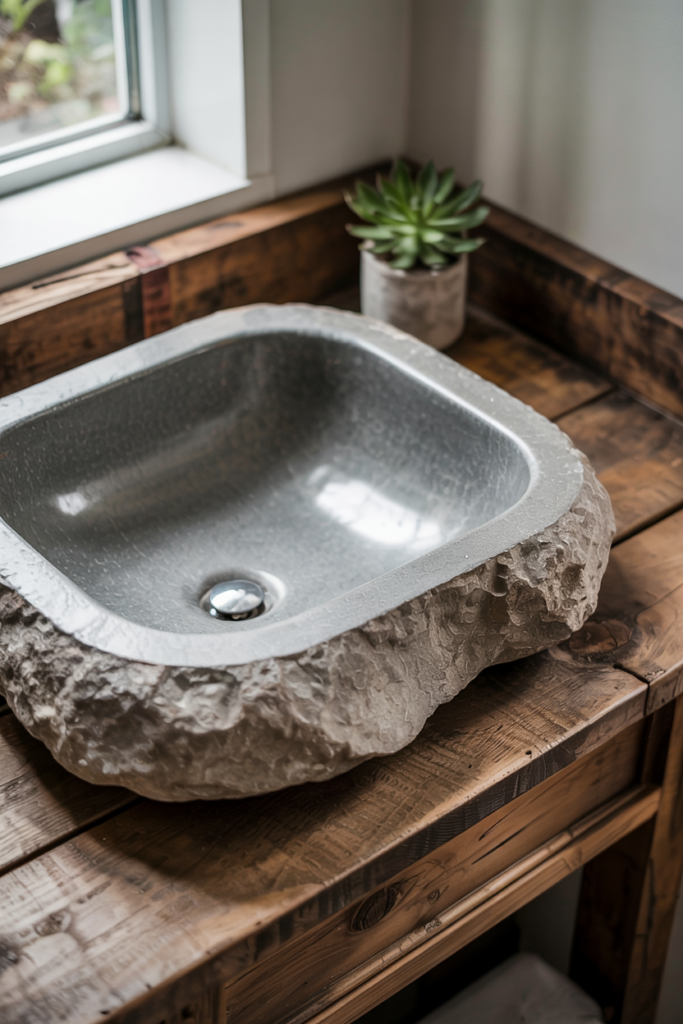
Woven Baskets
Chuck the sleek, fancy storage bins. Woven baskets are where it’s at. The slightly frayed edges and uneven weave fit perfectly into the wabi-sabi vibe. They feel natural, casual, and a little undone in the best way.
I use one in my own bathroom for extra toilet paper, and it’s oddly satisfying. There’s something about reaching into a textured basket instead of a plastic bin that just feels more grounded. Personally, I’d recommend mixing a couple of sizes—one for towels, one for toiletries—so it looks effortless but still keeps everything in its place.
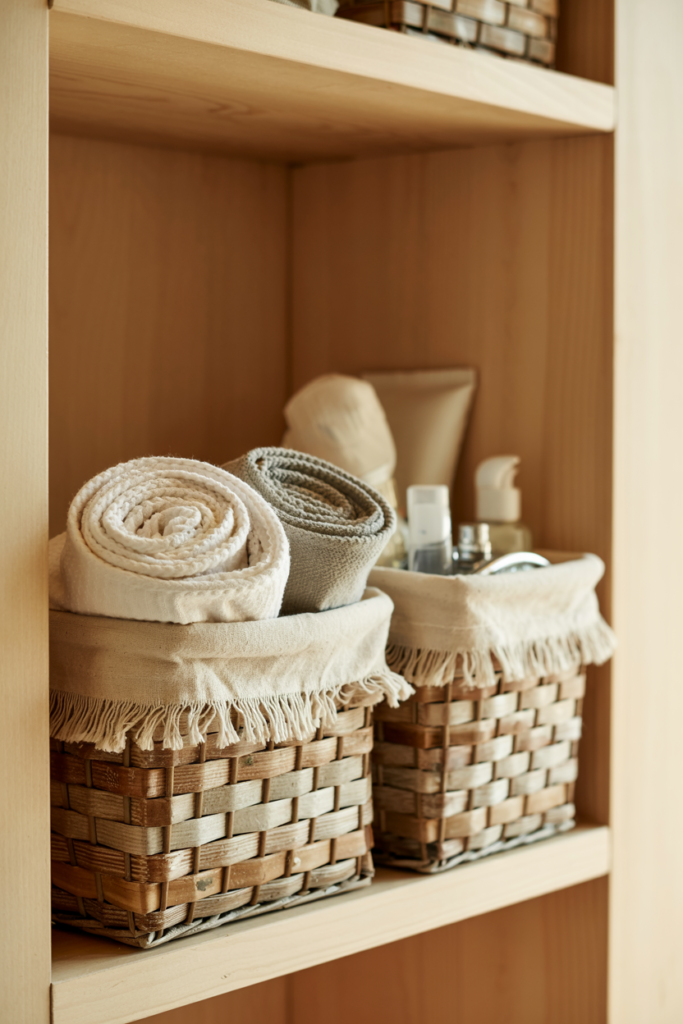
Cracked Ceramic Tiles
Perfect tiles are overrated. Cracked or handmade ceramic ones bring so much more character. Every line, uneven edge, or glaze variation adds soul to the space, making your bathroom feel lived-in instead of showroom shiny.
Personally, I’d choose tiles with subtle cracks or irregular finishes over polished, factory-perfect ones any day. They give the walls or floor a quiet depth, almost like they’ve been part of the room forever. In my opinion, it’s the small imperfections that make the whole bathroom feel more authentic and calming.

Minimalist Wabi-Sabi Bathroom Decor
11. Single Plant
One lonely plant in a chipped pot—that’s it. I’ve got a droopy fern in mine, and it’s basically my bathroom buddy now. Less is more, right?
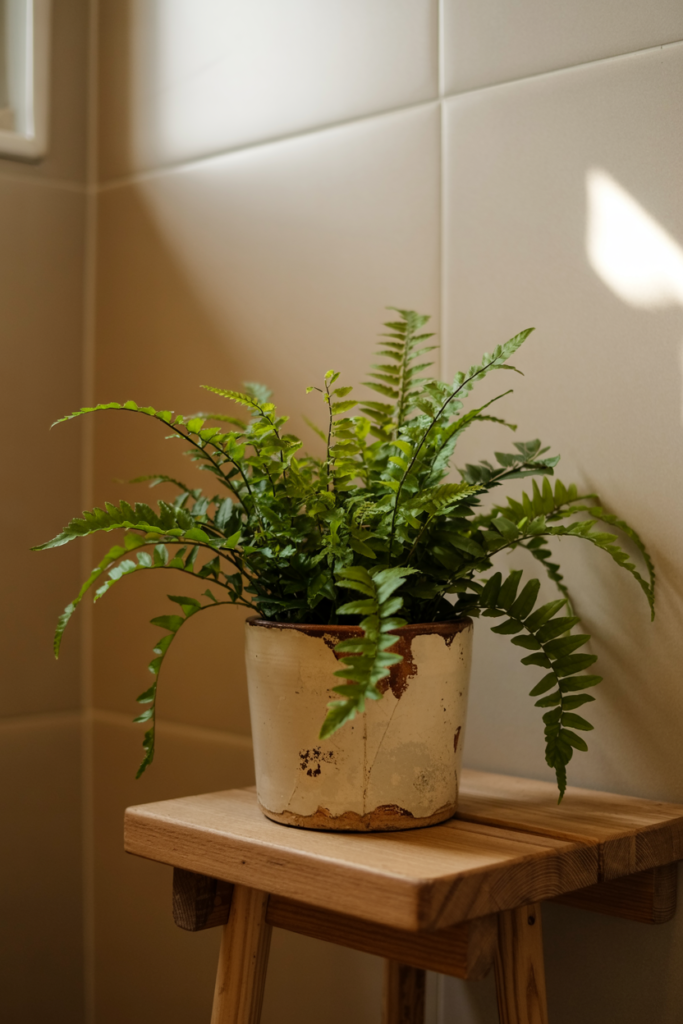
12. Bare Walls
Skip the art gallery vibe. Leave a wall blank or with just a faint water stain (natural abstract art, anyone?).
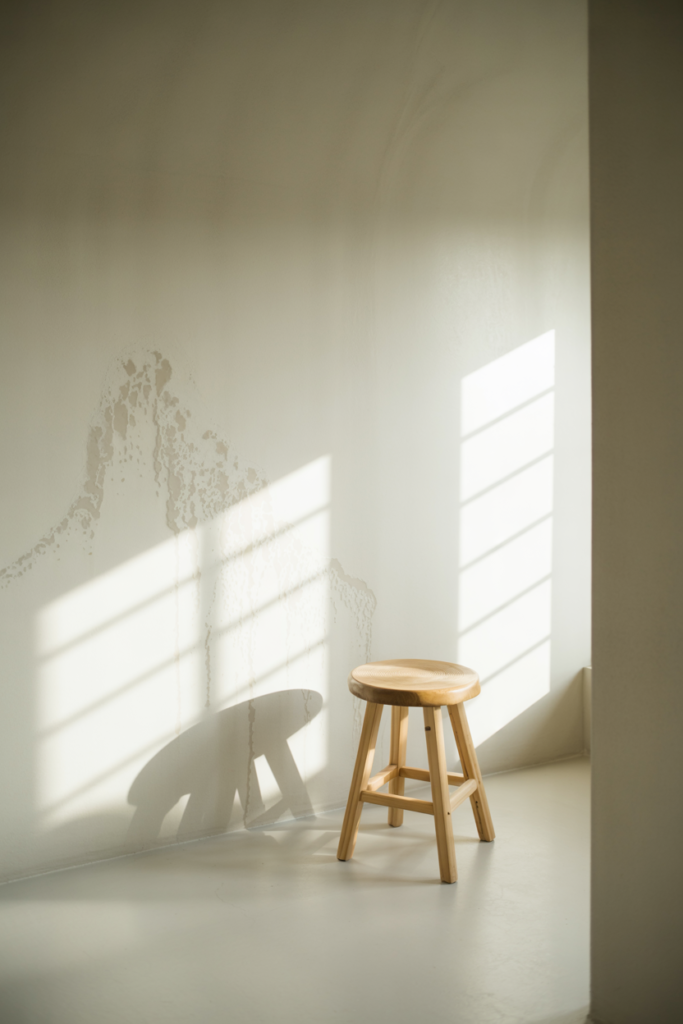
13. One Statement Light
A rusted metal pendant or a lopsided lantern? Perfect. It’s functional and flawed—just how we like it.
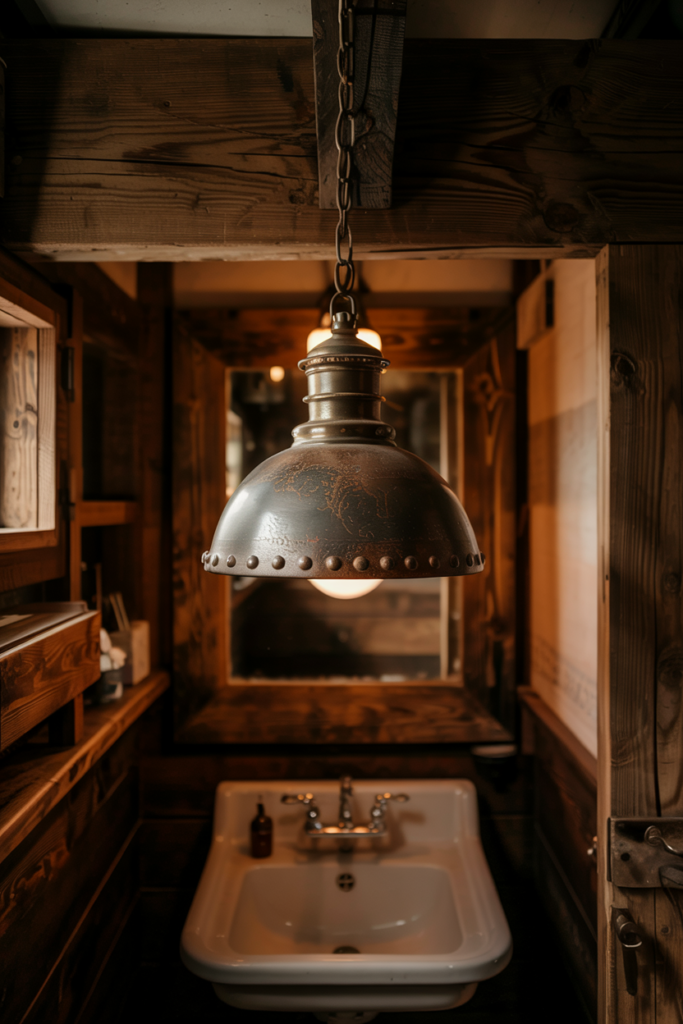
Bathing Area Wabi-Sabi Upgrades
14. Clawfoot Tub with Patina
A vintage claw-foot tub with some rust or chipped paint screams wabi-sabi. I’d kill for one, but my tiny apartment says no. Do you have space? Do it.
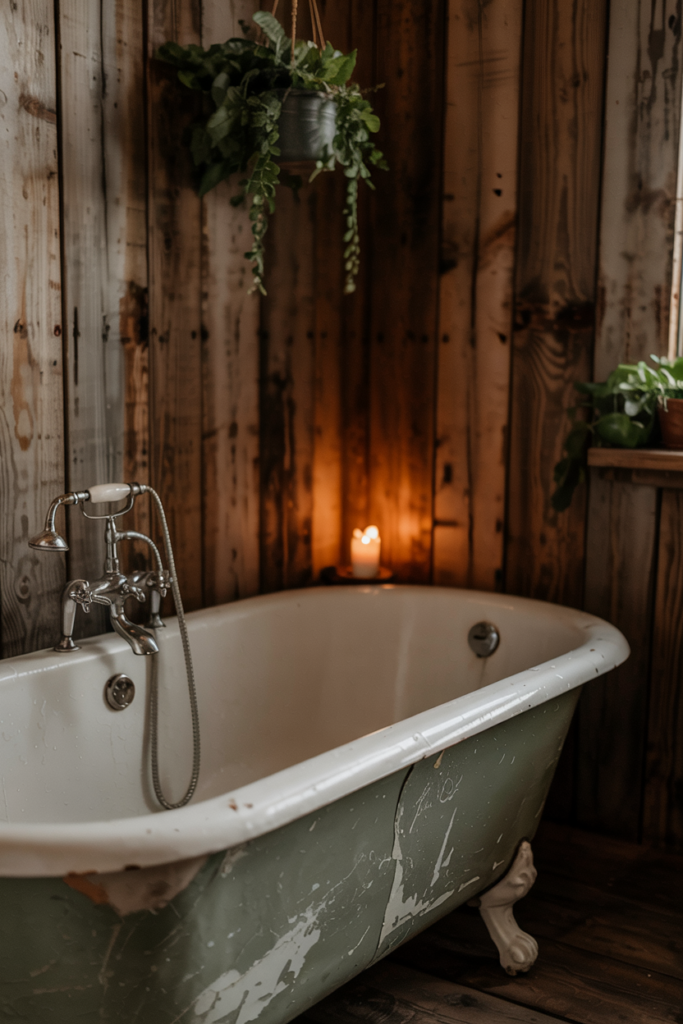
15. Stone Shower Floor
Swap out slippery tiles for an uneven stone slab. It’s gritty, it’s real, and it massages your feet. What’s not to love?
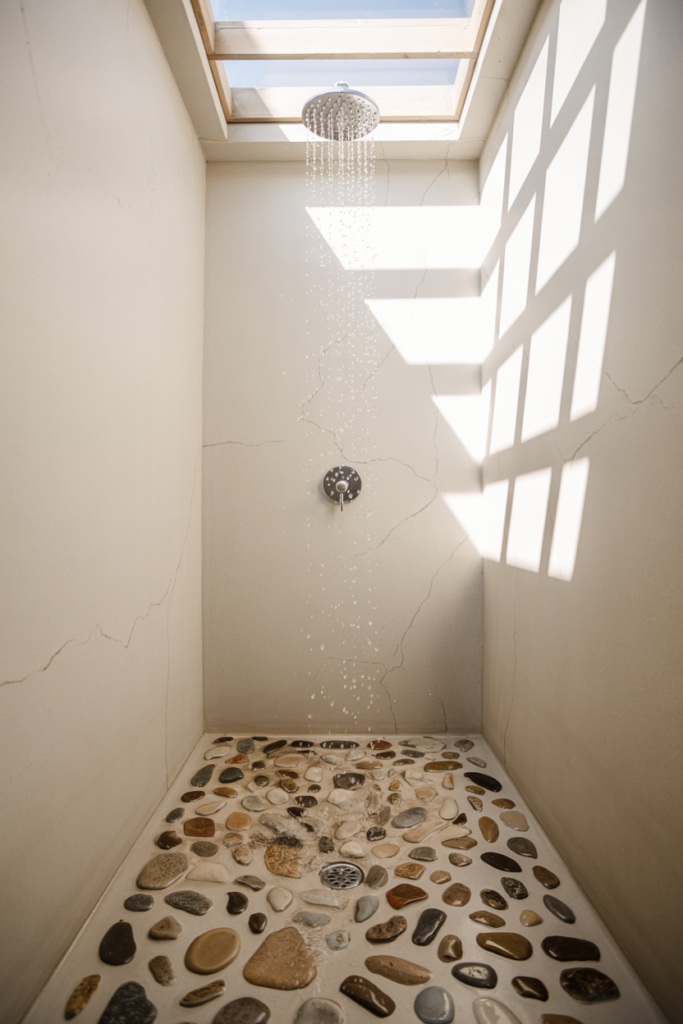
16. Wooden Shower Bench
A weathered wooden bench in your shower? Yes, it’ll warp over time, and that’s the point. Embrace the decay, my friend.
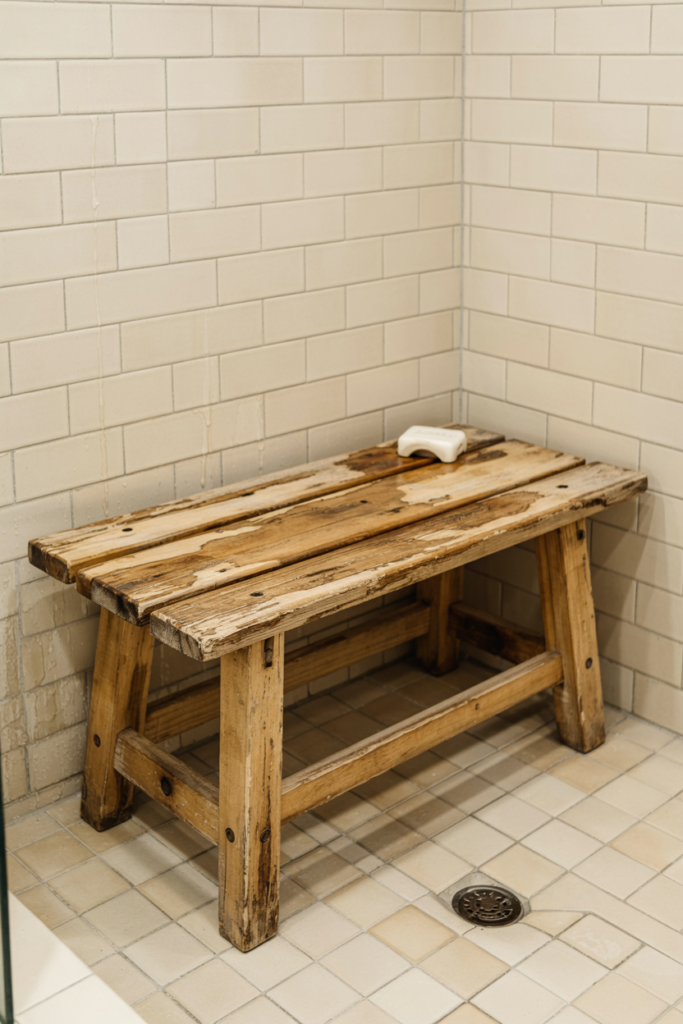
Imperfect Accessories for Your Wabi-Sabi Bathroom
17. Handmade Soap Dish
Grab a lumpy, uneven soap dish from a local potter. It wobbles a bit, but that’s the charm.
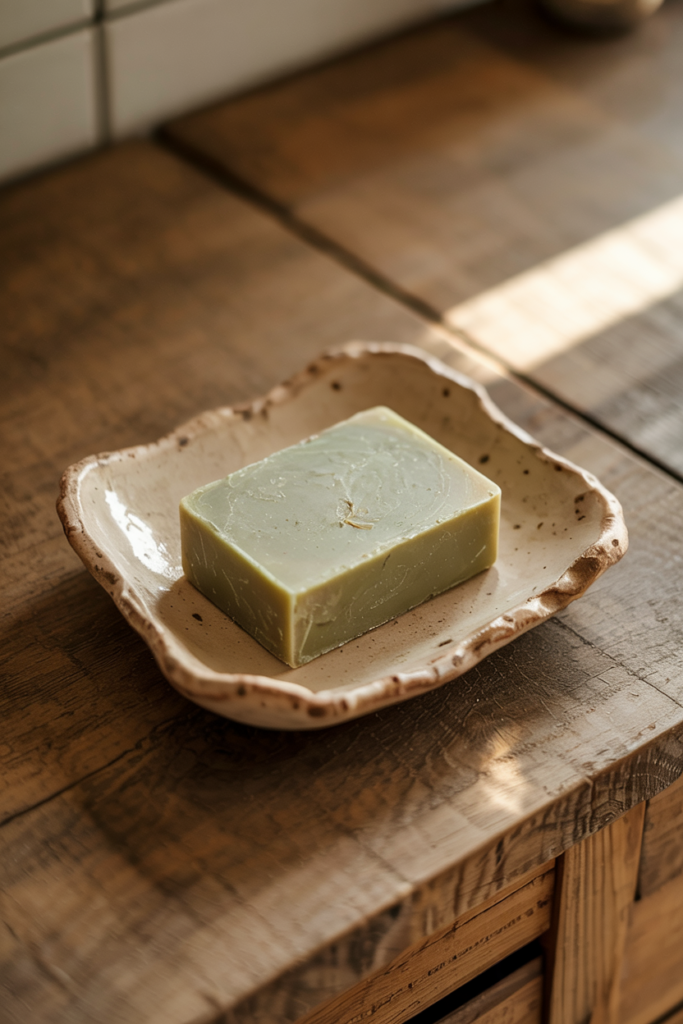
18. Frayed Towels
Toss those plush, hotel-style towels. Go for linen ones with frayed edges. They dry fast and look effortlessly cool.
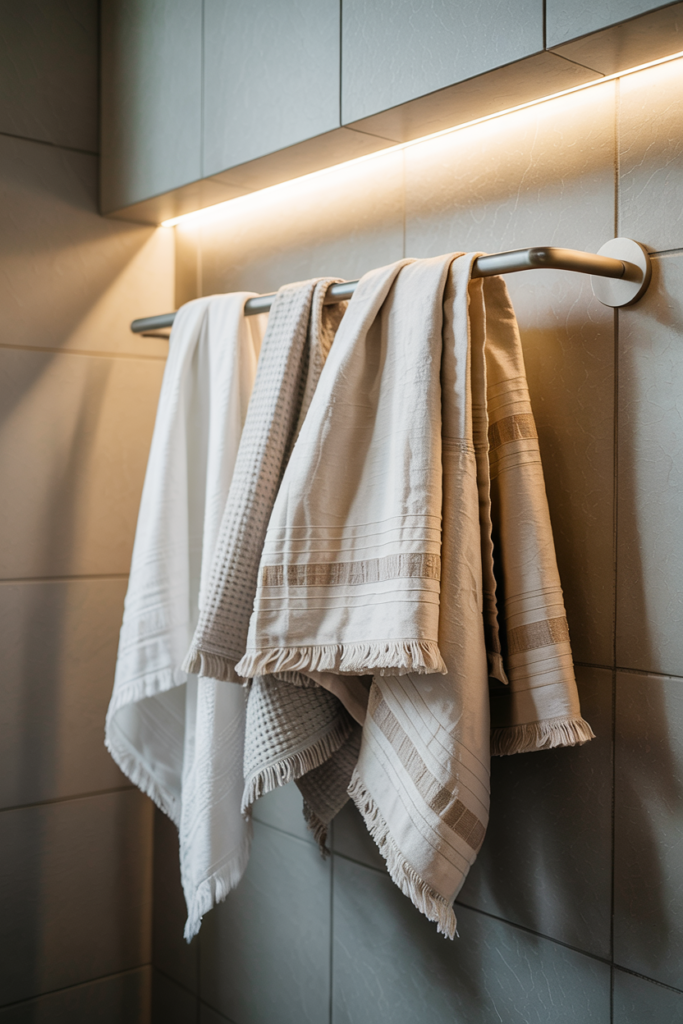
19. Rusty Mirror Frame
A mirror with a rusty or tarnished frame? IMO, it’s the ultimate wabi-sabi flex. You’re not just checking your face—you’re admiring the patina.
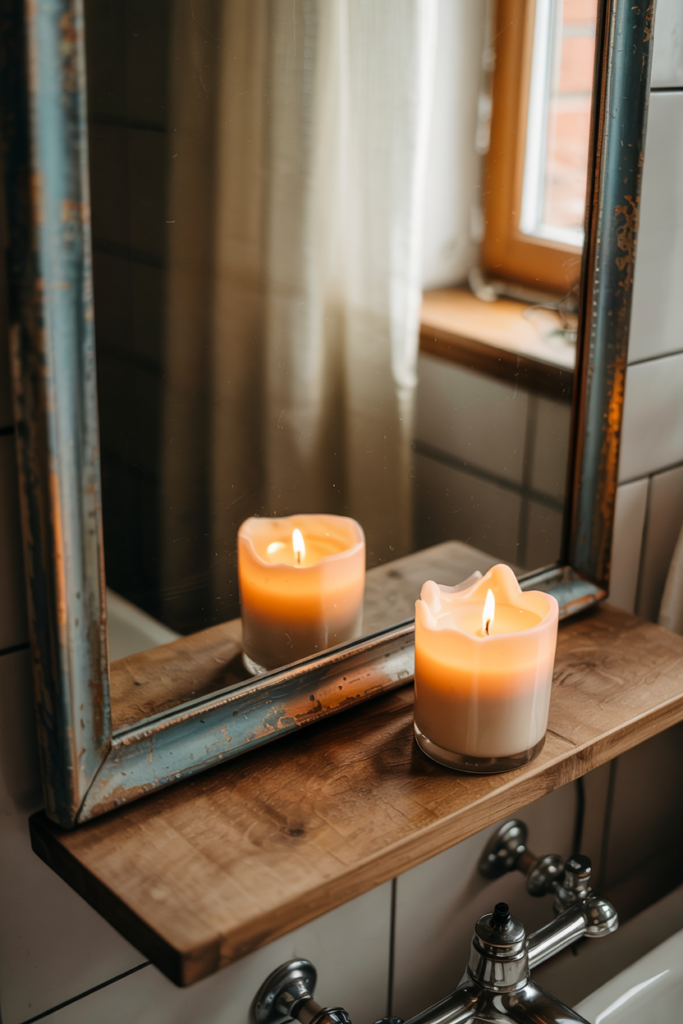
Lighting That Sets the Mood
20. Lantern Vibes
Hang a beat-up lantern instead of a sleek fixture. The dim, flickering light makes your wabi-sabi bathroom feel like a cozy cave.
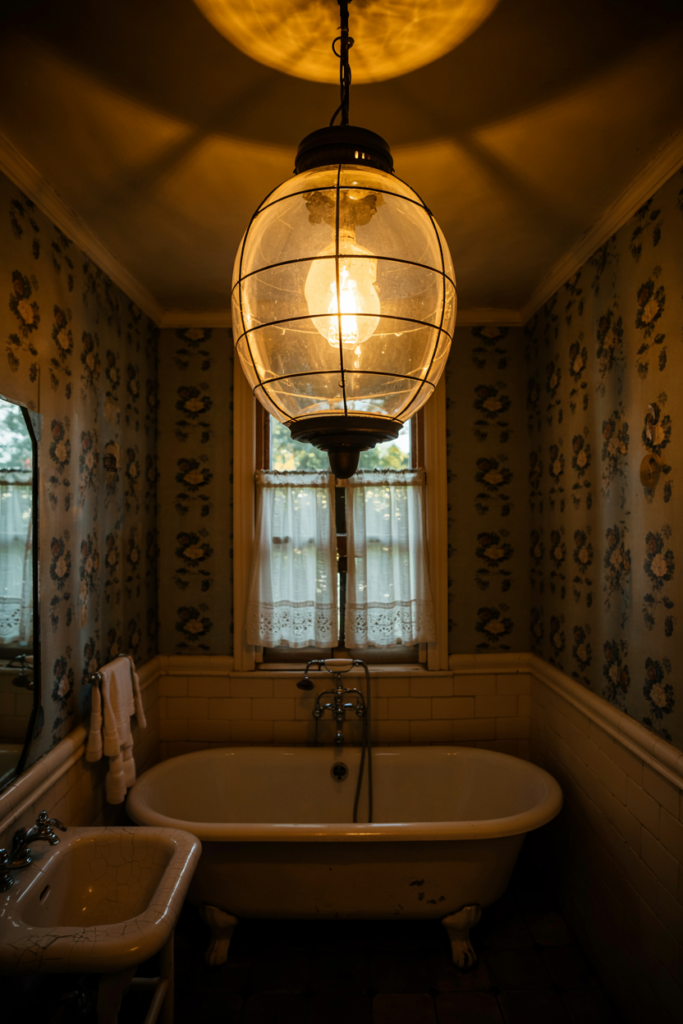
21. Exposed Bulbs
Screw fancy shades—let a bare bulb hang. It’s raw, simple, and a little industrial.
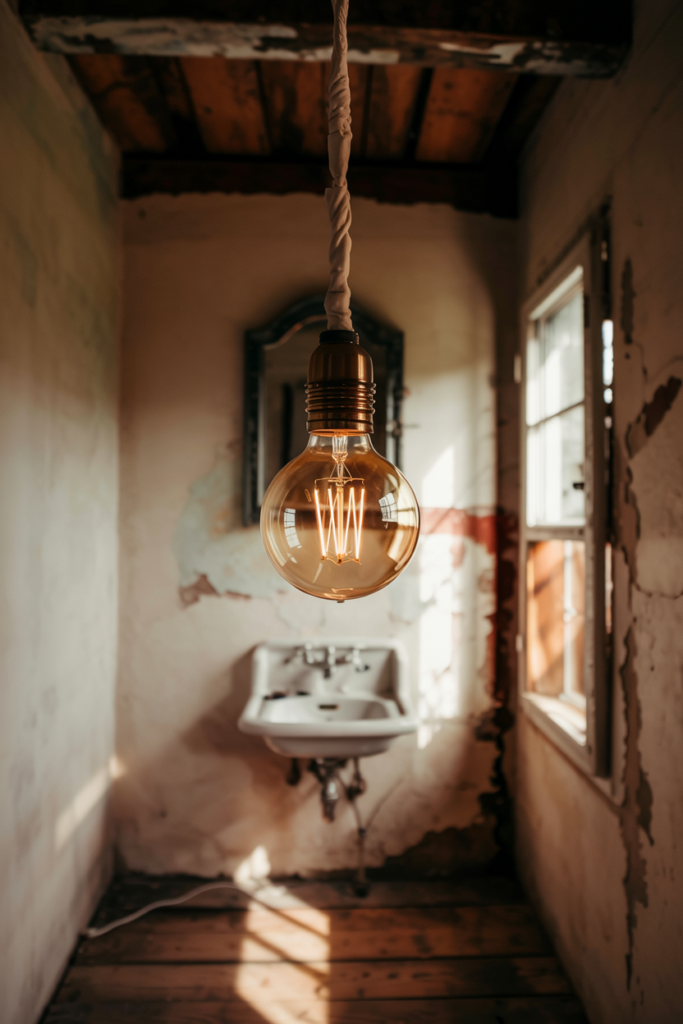
22. Candle Corner
A few wonky candles on a shelf? Yes. They drip wax everywhere, and that’s totally fine.
Wabi-Sabi Bathroom Storage Hacks
23. Open Wooden Crates
Stack some old crates for storage. They’re banged up, they’re practical, and they fit the vibe.
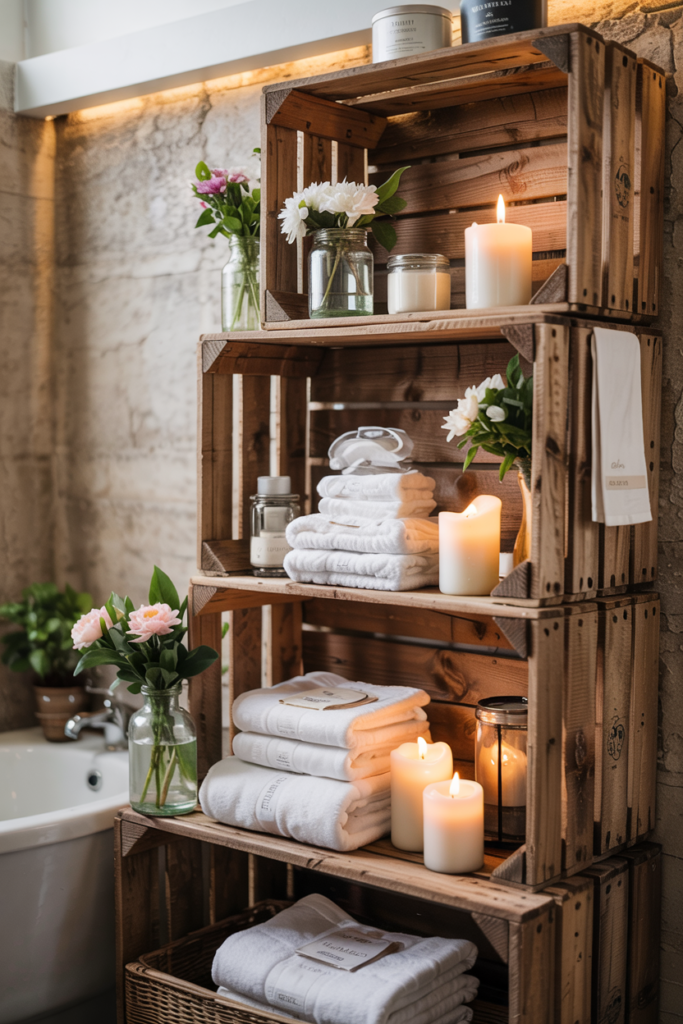
24. Clay Jars
Stash your cotton balls in a cracked clay jar. It’s rustic and beats plastic bins any day.
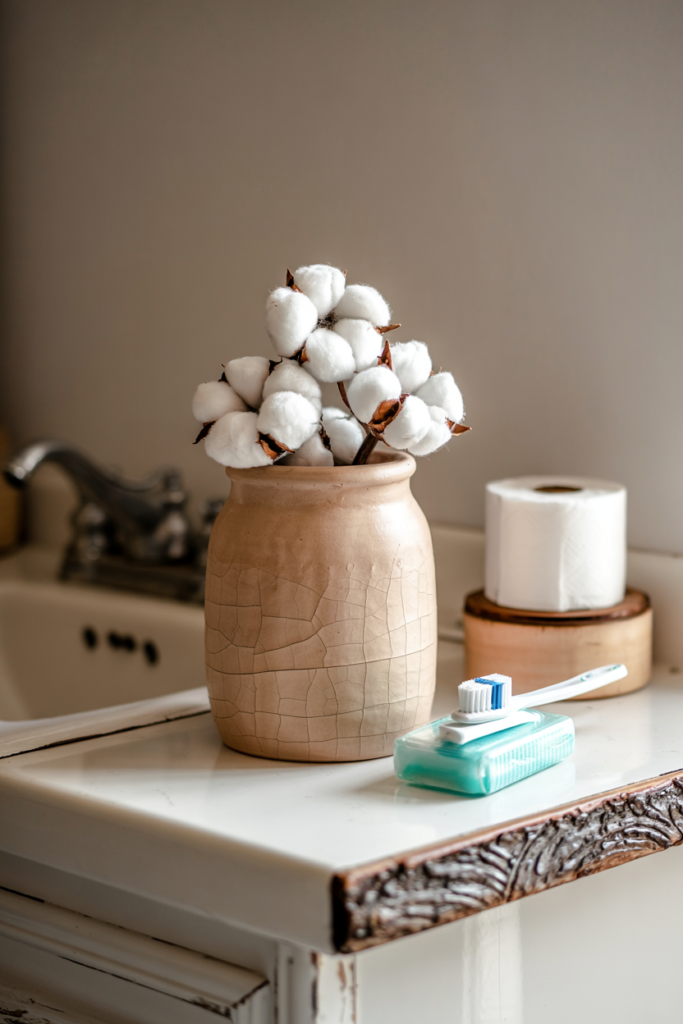
25. Hanging Rope Shelves
Tie some rope around wooden planks for floating shelves. They’ll sag a bit over time—perfectly imperfect.
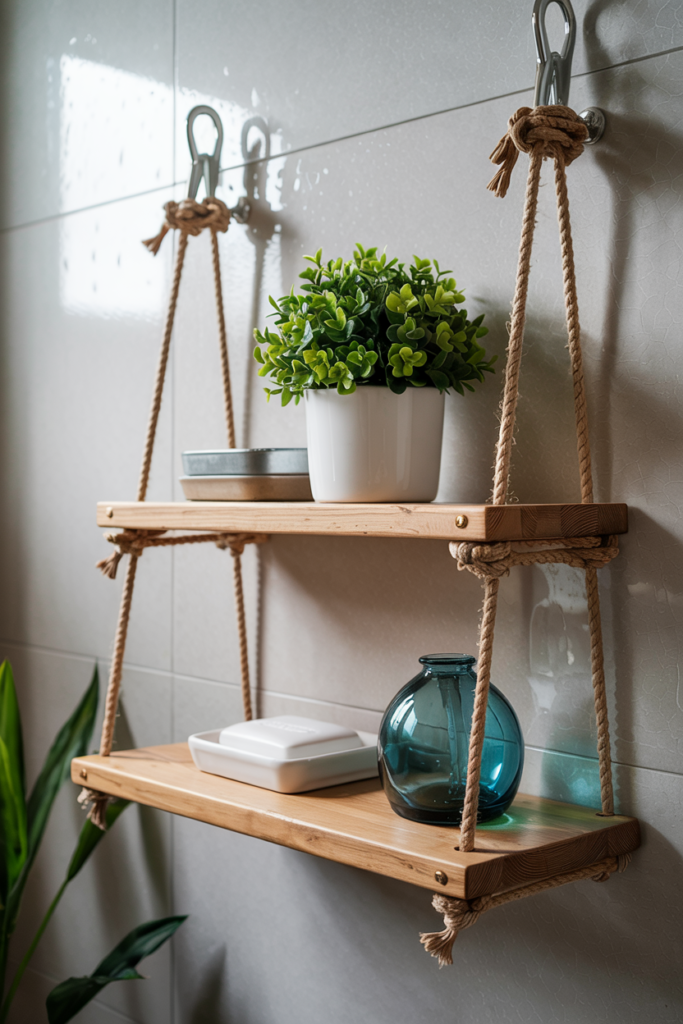
Final Wabi-Sabi Flourishes
26. Aged Brass Fixtures
Swap chrome for aged brass faucets. The tarnish adds depth, and it’s way less maintenance (no polishing required!).
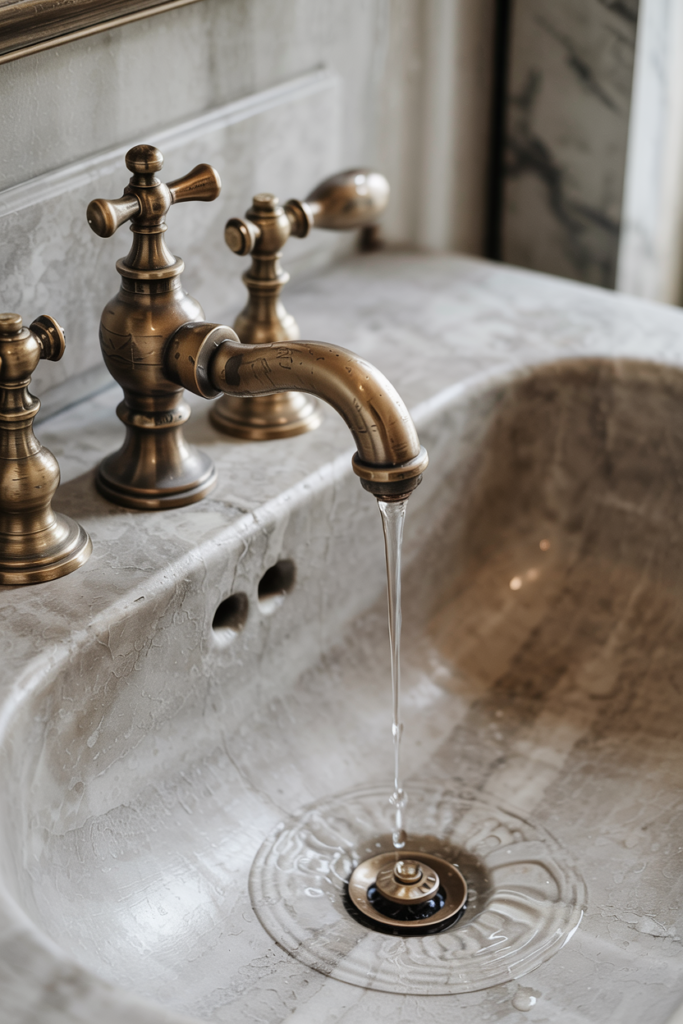
27. Nature’s Touch
Toss in a random branch or a rock you found outside. Sounds weird, but it ties the whole wabi-sabi bathroom together. I’ve got a twig on my sink, and it’s my favorite thing.
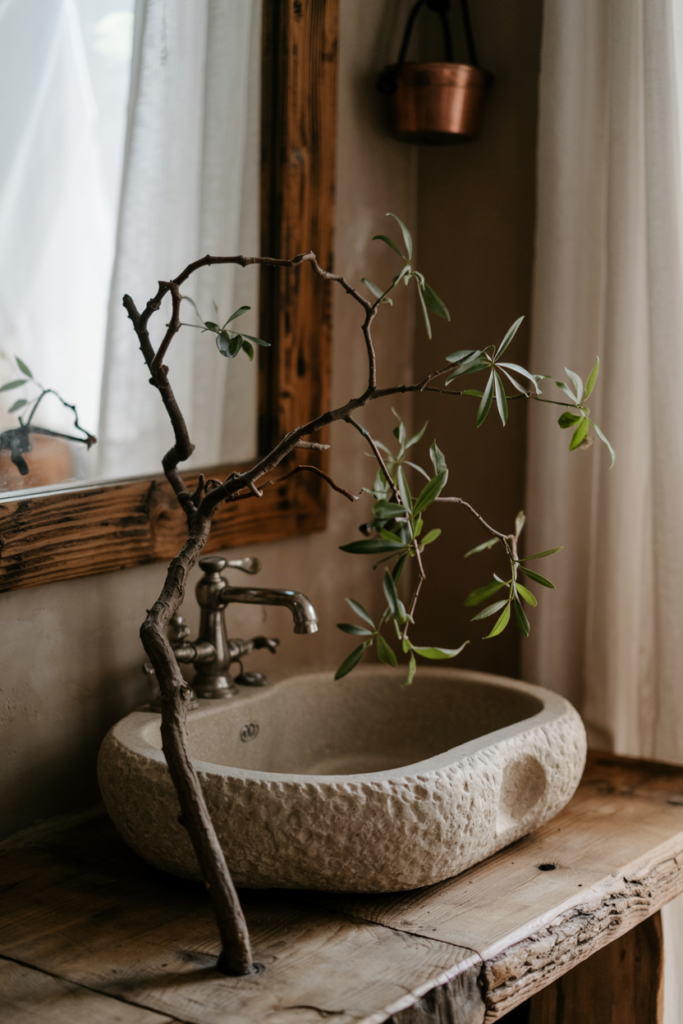
Wrapping It Up
So, there you go—27 ways to make your wabi-sabi bathroom a haven of imperfection. It’s not about chasing Pinterest perfection; it’s about letting your space breathe, age, and tell its story. I’m halfway through tweaking my own bathroom with some of these ideas (that pebble floor is calling my name), and it’s already feeling more me. What about you? Do you have a favorite idea from this list? Or are you just gonna wing it and see where the cracks take you? Either way, enjoy the mess—it’s the whole point! 🙂




